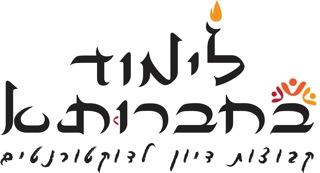Session 2: The Self and Power (De clementia 1.5.1-5)
1. The Emperor as the Soul of the State:
We examined Seneca’s striking metaphor of the emperor as the animus or anima of the corpus rei publicae, with the citizens as limbs of the body. This led to questions about individual autonomy within such a model. Does this metaphor imply absolute centralization of agency in the ruler? Or can members of the body possess some form of independent function? The metaphor highlights the Stoic idea of rational governance, but also raises concerns about depersonalization and hierarchy.
2. Medical Imagery and the Use of incidat:
Seneca's use of surgical vocabulary—particularly incidat (to cut into)—was analyzed as part of the larger metaphor of governance as healing. The group reflected on how clemency is not portrayed as permissiveness but as a form of disciplined, selective intervention. Just as a surgeon must cut to preserve life, so must the ruler act with severity only when necessary, guided by reason and concern for the whole.
3. Clementia as maxime decora imperatoribus:
Seneca claims that clemency is “most of all becoming to emperors,” sparking discussion about the unique ethical demands placed on rulers. Does this claim rest on a moral principle, a political necessity, or an idealized image of divine benevolence? The idea that emperors should reflect a special kind of moral excellence—distinct from that of ordinary citizens—was explored in relation to Roman ideals of virtus and self-presentation.
4. Relationship between clementia and magnanimitas:
A central theme of the discussion was how clementia relates to magnanimitas. Is clementia a separate virtue, or a subset of magnanimity applied in the context of judgment and power? Alternatively, is Seneca using magnanimitas as an illustrative comparison to argue that certain virtues are more appropriate depending on one’s social role? For emperors, clementia becomes the virtue that most visibly expresses their ethical superiority.
5. Seneca’s Rhetorical Strategy – Fictional Soliloquy:
The group noted that Seneca again adopts the voice of Nero in a fictional interior monologue. This rhetorical move invites the reader (and perhaps Nero himself) to imagine the emperor’s inner ethical deliberations. Is this a model for philosophical self-examination, or a subtle way for Seneca to guide Nero's self-image and actions? The pedagogical function of such staged introspection was discussed in the broader context of Stoic moral training.
6. The Mirror Metaphor and the Problem of Exemplarity:
We explored the metaphor of the mirror (speculum) and its philosophical implications. While Seneca had previously told Nero that he need not look to past exempla because of his natural goodness, here he seems to suggest that mercy (clementia) is the appropriate standard of imperial conduct. Does this imply that Nero should indeed use imperial exempla —real or metaphorical—to evaluate himself? The group discussed this tension between praise of innate virtue and the implicit need for normative ethical models, raising questions about how a ruler is to recognize and maintain moral integrity.
מפגש שני- 2.4.25: העצמי והכוח (De clementia 1.5.1–5)
-
הקיסר כנפש המדינה
בחַנו את המטפורה הבולטת של סנקה, המתארת את הקיסר כ-animus או anima של corpus rei publicae, כלומר כנפש הגוף הפוליטי, כאשר האזרחים הם אבריו. הדבר עורר שאלות על האוטונומיה האישית במבנה שכזה. האם המטפורה מצביעה על ריכוז מוחלט של הסוכנות הפוליטית בידי השליט? או שמא ייתכן שלחלקי הגוף תפקידים עצמאיים כלשהם? המטפורה מדגישה את רעיון הממשל הרציונלי לפי הסטואה, אך גם מעלה חששות מפני דה-פרסונליזציה והיררכיה. -
דימויים רפואיים והשימוש ב-incidat
נותחה לשון הניתוחים שבה משתמש סנקה—ובפרט הפועל incidat ("לחתוך לתוך")—כחלק מן המטפורה הרחבה של שלטון כריפוי. הקבוצה הרהרה כיצד הרחמים (clementia) אינם מוצגים כהתרככות, אלא כהתערבות מדודה וסלקטיבית. כשם שמנתח חייב לחתוך כדי לשמר חיים, כך גם השליט חייב לפעול בתקיפות כאשר נדרש, מתוך היגיון ודאגה לכלל. -
רחמים כ"תכונה ההולמת ביותר קיסרים" (maxime decora imperatoribus)
סנקה טוען כי הרחמים הם "ההולמים ביותר קיסרים", והדבר עורר דיון על הדרישות האתיות הייחודיות מהשליט. האם טענה זו נשענת על עיקרון מוסרי, צורך פוליטי, או על אידאל של חסד אלוהי? נדונה הרעיון שלפיו קיסרים אמורים לשקף מעלה מוסרית יוצאת דופן—שונה מזו של אזרחים רגילים—בהקשר לאידאלים הרומיים של virtus והצגה עצמית. -
הקשר בין clementia ל-magnanimitas
נושא מרכזי היה היחס בין רחמים (clementia) לרוחב לב (magnanimitas). האם clementia היא מעלה נפרדת, או ענף של magnanimitas בהקשר של שפיטה ושלטון? לחלופין, האם סנקה משתמש ב-magnanimitas כהשוואה לצורך המחשת טענתו שלפיה מעלות מסוימות הולמות לפי התפקיד החברתי? עבור קיסרים, הרחמים הם המעלה שמבטאת בצורה הברורה ביותר את עליונותם האתית. -
האסטרטגיה הרטורית של סנקה – מונולוג פנימי בדוי
הקבוצה שמה לב לכך שסנקה שוב מאמץ את קולו של נירון במונולוג פנימי מדומיין. מהלך רטורי זה מזמין את הקורא (ואולי גם את נירון עצמו) לדמיין את ההתלבטויות האתיות של הקיסר. האם מדובר במודל של בדיקה עצמית פילוסופית, או בדרך מעודנת של סנקה לעצב את תדמיתו העצמית של נירון ולהשפיע על מעשיו? תפקידה הפדגוגי של אינטרוספקציה מבוימת שכזו נדון בהקשר רחב יותר של תרגול מוסרי סטואי. -
מטפורת הראי ובעיית המופתים (exempla)
נחקרה מטפורת הראי (speculum) ומשמעותה הפילוסופית. אמנם סנקה טען בעבר בפני נירון שאין לו צורך להביט במופתים מן העבר בשל טובו הטבעי, אך כאן נראה שהוא מציע שהרחמים הם אמת המידה הנכונה להתנהגות קיסרית. האם פירוש הדבר שעל נירון להשתמש ב-exempla קיסריים—אמיתיים או מטפוריים—כדי להעריך את עצמו? הקבוצה דנה במתח שבין שבח המעלה המולדת לבין הצורך המרומז במודלים אתיים נורמטיביים, ושאלה כיצד יכול שליט לזהות ולשמר את יושרתו המוסרית.

